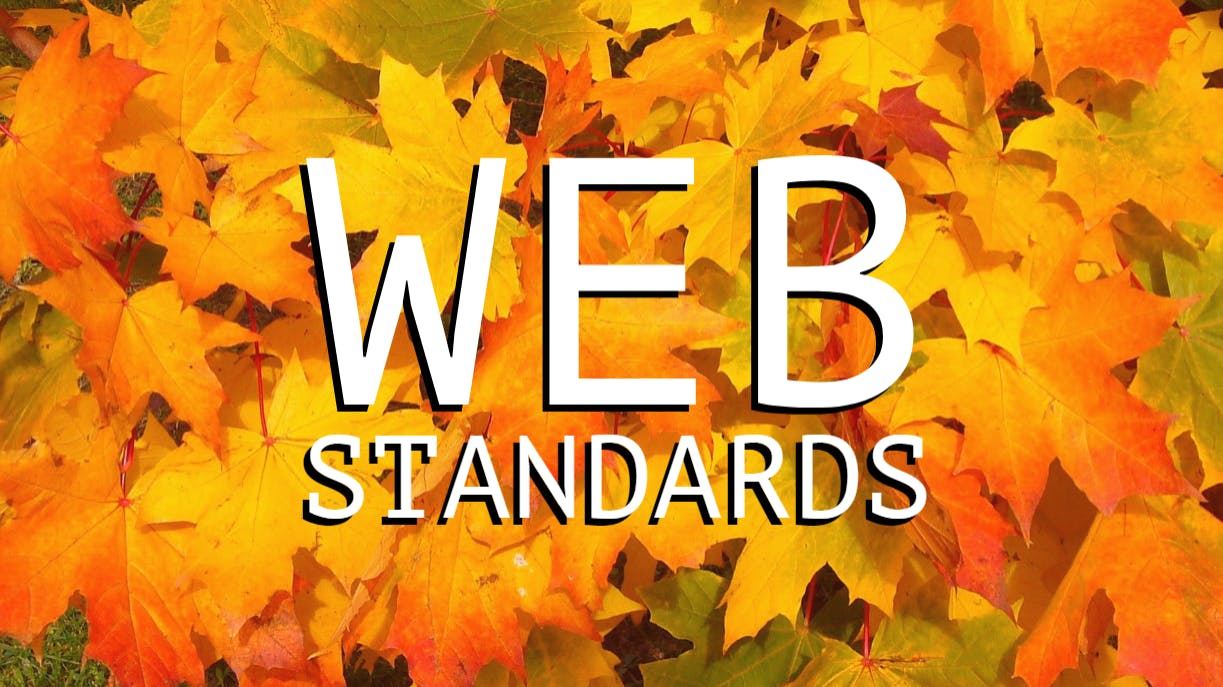In 1990 — the early days of the web — Tim Berners-Lee created a piece of software called WorldWideWeb. It was the first web browser. It allowed people to write information that could then be read by others over the internet.

Soon after his invention, others built upon this technology and created competing web browsers. Each web browser shared similarities with each other, but none were exactly the same. Browsers would support proprietary features, or render HTML, CSS, and JavaScript differently.
This posed a problem for those creating content for the web. One might write a web page that displayed perfectly fine in one, but looked or behaved much different in another.
For example, if one browser supported the CSS position:fixed feature…
.header { position: fixed }
The header would appear fixed to the top of the page.

But that exact same code in a browser that didn’t support postition:fixed would behave differently.

Notice the header disappears as the user scrolls. In this case it may be a mere annoyance, but inconsistency between browsers causes huge inefficiencies for developers and horrible experiences for users.
The present
Today, these inconsistencies are still and issue, but are lessened by the use of standards across the web. And all web developers should be thankful for these standards.
Consider that while old technologies, like position:fixed stick around, new technologies, browsers, and devices are created and used by developers and consumers. Without standards, development would quickly spiral out of control.
Reaching users
Having standards means the ability for more reach. There are a multitude of browsers and devices out there that can consume sites and apps. With standards for all these devices to stick to, web developers can focus on creating a product that works on one client and may only need minimal tweaking to get working on the others.
As consumers we can be happy to choose whichever client we want. Having standards means that more sites and apps are available and correctly rendered for us.
Emerging technologies
The effect of standards becomes very apparent when looking at emerging technologies. Standards keep things working while allowing very rapid development of emerging technology and iterations of existing technology.
Developers can enjoy more efficient development and maintenance. There is better documentation available because, when more people use and maintain code which follows the same standard, more people understand and can collaborate of the same piece of software. The reason this blog can be so helpful is because other developers are coding their sites using the same standards as me.
Even old technologies
As older tech is iterated upon, if they push towards standards, competing technologies can start to coincide and build upon each other. More developers become available to adopt the technology and more users can consume it.
When standards bodies decide on standards, they strive towards backwards-compatibility. As new tech becomes old, maintenance can stay efficient. With standards, you can be user that your site that uses positon:fixed will behave in the same manner even when new CSS rules are created and new browsers are released to support them.
Staying valid
By coding according to standards, projects can be validated against those standards to ensure the most stable code that be used by the most users. Validation can even catch errors in code.
Discovery
Consider how users find information. Search is a huge factor. Standards allow search engines to index information in a more uniform way. If your project follows web standards, it will be found easier, indexed more effectively, and displayed higher on search results.
How standards come to be
On the web, standards are discussed and decided upon in groups of concerned people and organizations called standards bodies. Standards bodies publish documents which describe various standards across their respective technologies. Some of these documents include…
Recommendations published by the **World Wide Web Consortium, or W3C**— of which Tim Berners-Lee is a founder and current leader.
Living Standard by **Web Hypertext Application Technology Working Group, or WHATWG**
Request for Comments (RFCs) documents published by the **Internet Engineering Task Force, or IETF**.
There are other bodies relevant to web standards such as ISO, Ecma International, Unicode Consortium, and IANA.
Standards bodies create the standards that make our work as developers more efficient and make the technology we take advantage of as consumers possible.

